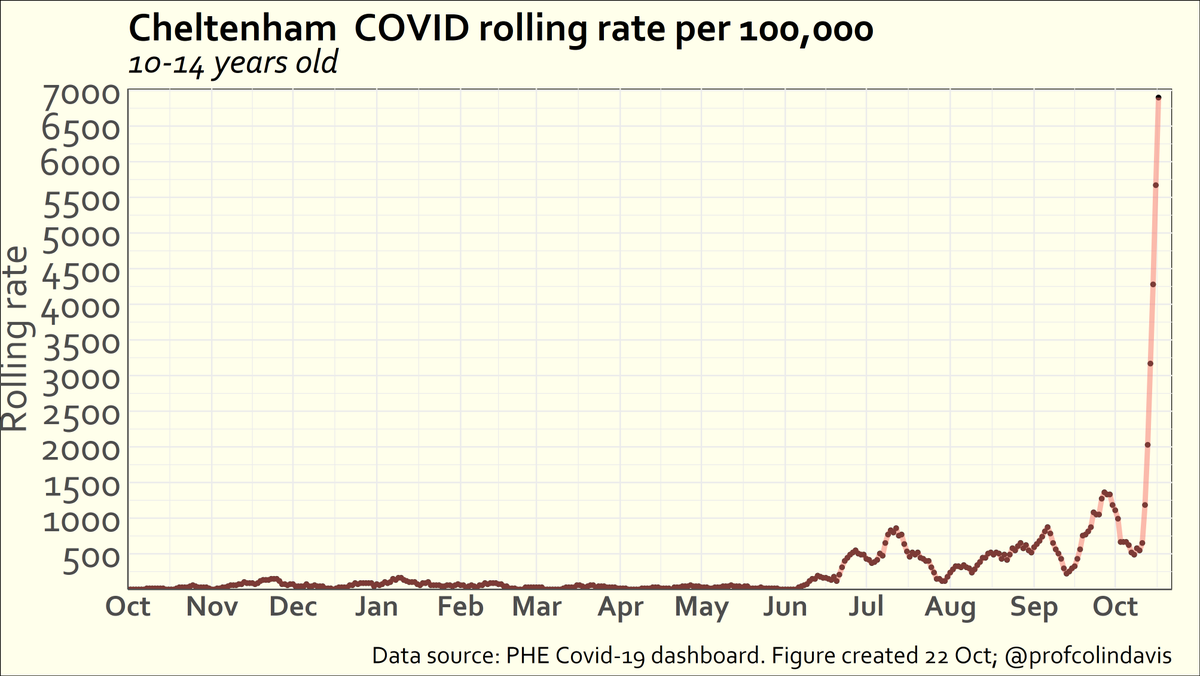
The 7-day rolling rates for 10-14s in the South West continue to rise alarmingly. In Cheltenham the rate has now reached 6900/100k (for comparison, Kettering, which previously had the highest ever rate for this age group, peaked at 6304/100k). Here's the graph since 1 September. 

And for context, if we zoom out over the last year, the graph looks like this. I guess it's a relief that the half-term break is here, but I hope the holidays won't involve lots of socialising with extended family ... 

In case you're wondering, having overtaken Kettering, Cheltenham moves into third place in the highest rolling rates in any year group. Second place is held by Nottingham 15-19 year olds (more specifically, 18 year olds in university halls at the start of term last year). 

I suspect Cheltenham will overtake Nottingham soon. But half-term means it probably won't be able to take the top spot, currently occupied by Newcastle 15-19s (another freshers week fiasco). The rate there reached 8137/100k. Hard to beat, perhaps, but DfE won't give up easily. 

Cheltenham's 10-14 year olds have moved past Nottingham's 15-19s into 2nd highest age-specific rolling rate we've ever seen in England. And at 7714 per 100k (1 in 13 tested positive last week), it's looking like maybe they'll make it to the #1 spot in the next day or two. 

• • •
Missing some Tweet in this thread? You can try to
force a refresh











